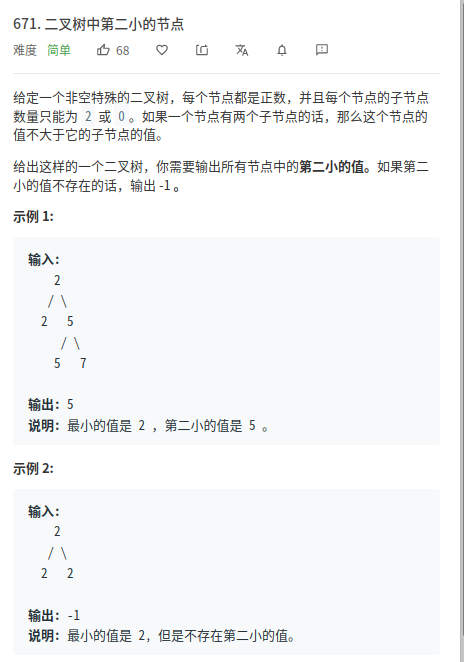
树:
2<br /> / \<br /> 2 5<br /> / \<br /> 5 7
0 一开始: dfs(root, 2),这里根节点值是2, 不比2大,因此递归调用在左子树,右子树上面。
11 第一层左子树:dfs(root, 2),与01同样的情况, 因此调用在它的左右子树。
111 dfs(nil, 2), 左子树为空,返回-1
112 dfs(nil, 2), 右子树为空,返回-1
11 回到这个递归分支,返回-1,表示左子树没找到。返回0
21 第一层右子树des(root, 2), 这里5比2大,直接返回5,分支结束。
0 左分支返回-1, 又分支返回5,递归结果返回5。递归结束。
type TreeNode struct {Val intLeft *TreeNodeRight *TreeNode}func findSecondMinimumValue(root *TreeNode) int {return dfs(root, root.Val)}func dfs(root *TreeNode, s int) int {// If root is nil, that means we can't find anything,// we return -1if root == nil {return -1}// If the current tree value is bigger than the smallest// element we hat, that means we have found the second smallest// one in the tree, since all subtrees is greater or equal to this// value.if root.Val > s {return root.Val}sLeft := dfs(root.Left, s)sRight := dfs(root.Right, s)if sLeft == -1 {return sRight}if sRight == -1 {return sLeft}return min(sLeft, sRight)}func min(a, b int) int {if a < b {return a}return b}

